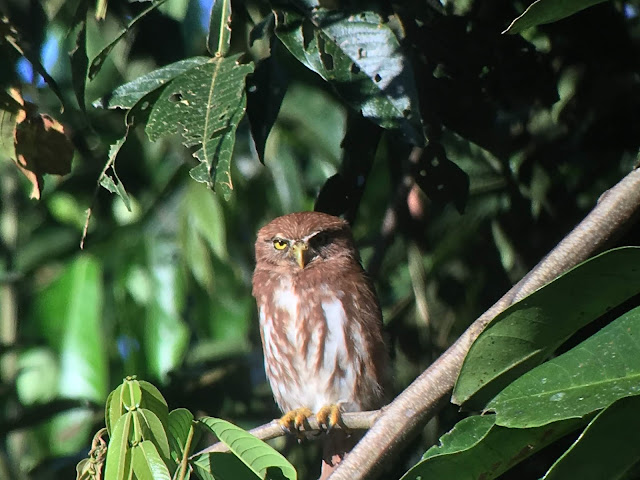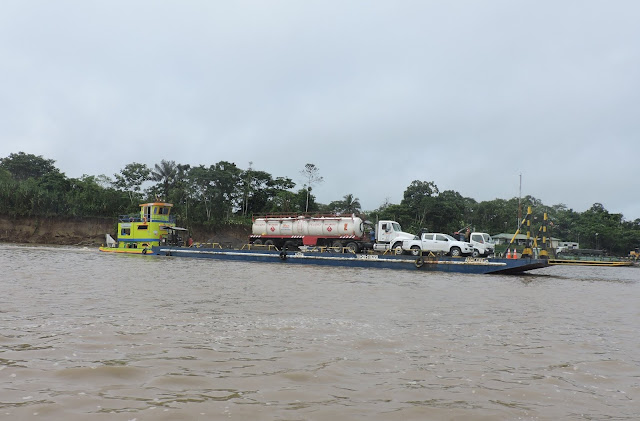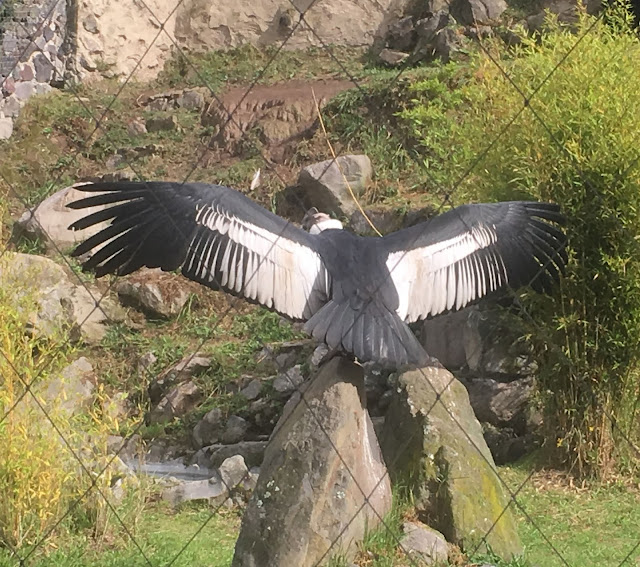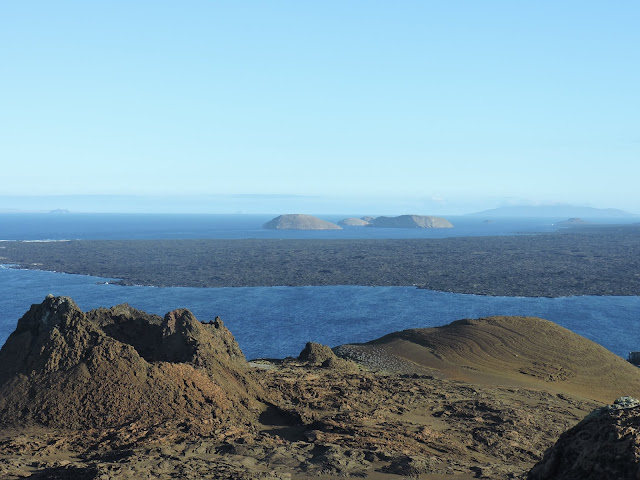Written by J. Warren:
Ecuador is a small country of 19 million people. Despite its size, it is one of the most diverse places in the world. There are four main parts- the Amazonian area, the Andean highlands, the coastal area, and the Galapagos. In 2008, the constitution of Ecuador recognized nature as an entity with its own legally enforceable rights. It was the first country to do so. Although nature is its own entity, it cannot vote nor does it have a voice in the debate about the future of Ecuador. Currently oil is the major source of income, with farm-raised products such as flowers, bananas and shrimp in second place. Tourism is behind these, but growing in importance, causing friction with the oil industry.
Quito
I stayed in Quito for 3 days. At 9300 feet, Quito is the highest capital in the world. The city sits on a plain, wedged between the steep ascent of the mountains to the west and a precipitous drop off the mountains to the east. As a result, the city of almost 2 million is 7 miles wide and 30 miles long. Any guesses on what traffic is like? The historic district of the city is one of the oldest in the world and the buildings are quite well maintained. Many indigenous people come to Quito to sell their wares in public markets. It is a colorful show. The equator, the source for the country’s name, is nearby. It is interesting to visit the Equator museum to see the only point in the world where water drains from a sink without the Coriolis effect. This was demonstrated by the museum staff who took a portable sink to each side of the equator to show the clockwise or counterclockwise swirling. Then they straddled the sink across the Equator. The water drained out of the sink directly. 8th grade science was right.
 |
| City market |
 |
| Condor at sanctuary |
 |
| Downtown- Basilica |
 |
| Basilica Gargoyles-Ecuadorian animals |
 |
| Basilica view |
 |
| gold interior |
 |
| Downtown - Independence Square |
 |
| Presidential Palace |
 |
| woman waiting |
 |
| Otavalo Market-girl sleeping with doll |
 |
| Otavalo Market |
 |
| baby of a weaver |
 |
| Straddling the equator |
 |
| Ubiquitous roadside flower stall |
 |
| Volcano seen from Quito hotel |
From Quito, I flew east to Coca, a small town that is located on the Napo River, a tributary to the Amazon. Coca is the gateway town for anyone wanting to travel to the Amazonian jungle in Ecuador. Mostly tourists and oil company workers make the trip. From Coca, getting to the jungle lodge required a two-hour boat ride along largely uninhabited parts of the river. En route, we passed several barges conveying heavy equipment to the oil fields.
The lodge where I stayed is located in a jungle community of less than 100 residents. Each community in the jungle makes their own rules by which they live. All of the communities are in need of jobs. Some villages have opted to work with the oil companies, sadly at the loss of the surrounding jungle. Other communities, like the one where I stayed, have opted to invest in eco-tourism.
The lodges have amazing native guides who escort tourists on hikes in the jungle or on boat trips along the river. They can spot birds and animals that are hidden behind thick foliage and completely missed by tourists. We saw all types of birds, weird insects and many types of monkeys at play. The guide spotted a 6-foot red-tailed boa wrapped around a tree limb, awaiting an inattentive bird or monkey. How did he see it? Check the photo.
The community inhabitants are welcoming to the tourists. One woman shared a jungle delicacy of grilled large larvae. I tried, but could not bring myself to eat one. Others at the lodge did try it but I was not hearing any rave reviews. The community had a school that serves 80 children, ages 5-18. The kids come from surrounding communities, by foot or by boat. I saw many of the students arriving at school with cell phones in hand. Will visitors in the future see cell phone towers dotting thejungle?
The jungle is a lush ecosystem. Many of the indigenous people are trying to protect their land and preserve their culture. It will be interesting to see if the communities who have opted to pursue ecotourism have enough economic stability to stave off the encroachment of the oil companies. The future for the children of these jungle communities is uncertain. [continues after photos]
 |
| weaver bird |
 |
| blue and yellow macaws on limb |
 |
| Oropendola |
 |
| Birds-pygmy owl |
 |
| spoonbill |
 |
| tanager |
 |
| weaver bird nest |
 |
| Butterfly-owl |
 |
| Child and mother |
 |
| Child at school |
 |
| Child watching music videos on phone |
 |
| Children at school-ages 6-8 |
 |
| Children waiting for school to start |
 |
| Indigenous community buildings |
 |
| solar panels |
 |
| Indigenous delicacy- larvae |
 | |||
| Indigenous woman harvesting yuca |
 |
| Insects |
 |
| Jungle |
 |
| Local market vendors |
 |
| Local market |
 |
| cooked larvae |
 |
| Monkeys |
 |
| On the river to the lodge |
 |
 |
| Red-tailed boa in tree |
At a time when the planet is facing unprecedented environmental challenges, places like the Galapagos offer a glimmer of hope. It is not just that the islands have animals that have evolved into unusual forms and sizes, but it is also the quantity of these animals. The Galapagos are teeming with life, on land and especially in the surrounding sea. There are 18 main islands, all formed from volcanos. The environment on each of the islands is harsh, with limited vegetation and fresh water. The environment cannot support most types of life which explains why the island land inhabitants are limited reptiles, cold-blooded animals who do not require a daily food source to maintain their metabolism. The challenges of the environment are what has caused each species to adapt to its own island in a unique way. [continues after photos]
The Galapagos were first discovered and mapped by explorers
in the mid 1600s. Charles Darwin did not arrive until 1835, 3 years after
Ecuador had annexed the islands. Explorers and whalers who stopped at the
Galapagos introduced goats so that they could visit the islands to pick up
fresh meat during their voyages. The whalers also took giant tortoises as a
source of meat, resulting in the extinction of certain species. Despite these events, on the whole the
remoteness of the islands and the difficult living conditions limited the full
impact that humans can inflict on an area. During World War II, the Ecuadorian
government allowed the U.S. to build a military base on one of the islands in
order to protect the Panama Canal. Following the war, the U.S. wanted Ecuador
to sign a 99-year agreement to allow U.S. forces to remain. The Ecuadorian
government, having witnessed what happened to Cuba, wisely said “no”. The
Americans left in a huff, throwing all the military hardware in the ocean
before going.
The Galapagos became a national park in 1959. With the
establishment of the park came efforts to re-introduce tortoises and eradicate
the goats (they’re gone) in order to return the islands to their original
ecosystems. Currently the Galapagos are experiencing unprecedented tourism,
with more than 200,000 visitors annually. The Ecuadorian government is trying
to leverage the growing income from tourism to support efforts to maintain the
ecosystems of each island.
I visited the island with a group of 10 Americans. We were
on a small ship that went to a different island daily. We went on hikes to see
each island and its own ecosystem and animals. The birds are amazing: the weird
waddling boobies- blue-footed, red-footed, and masked; frigate birds with the
males signaling their interest in mating by inflating a large red sac under
their necks; large albatrosses turning their eggs to help them hatch. The giant
tortoises and the land and sea iguanas look like creatures that emerged from
some primordial ooze (not too far from what really happened). Park rules require people to remain seven
feet from any animal. This is a good
idea in principal but the animals have no fear of humans and will often get
close. [continues after photos]
 |
| a Red-footed |
 |
| blue-footed |
 |
| Red-footed booby with chick |
 |
| Red-footed on nest_ |
 |
| blue-footed with chick |
 |
| booby-blue-footed |
 |
| masked couple |
 |
| masked |
 |
| masked, male seeking a mate |
 |
| flamigo |
 |
| frigate, adult female |
 |
| frigate, baby |
 |
| frigate, male looking for love |
 |
| frigate, male |
While the land creatures are interesting, the life in the sea is where the real action is happening. I went snorkeling twice a day and found every stop to be different. The water around the Galapagos is full of life - sea lions, penguins, sea turtles and sharks (I saw reef, white tip and hammerhead). There were many different species of colored fish. At the bottom of the sea, I saw five types of starfish, some the size of a dinner plate. The sea was interesting, not only because of the variety of species, but because of the quantity of animals. There were not just some colorful fish, there were hundreds of them, darting back and forth in their tight schools. One day, I saw so many sea turtles that I stopped counting when I got to 50. It gave me hope to see so many of these huge turtles gracefully swimming in such large numbers. There were hundreds of sea lions, a ubiquitous site on any Galapagos beach. In the water, they like to play with humans. On several occasions, I had sea lions swim very close to me, sometimes giving me a little bump. This was a sign that they wanted to play. They would spin, I would spin. I would flip, they would flip. They swam in front of me, under me and to my side. Sometimes there was only one, other times it was 3 or 4. I think this was one of the coolest experiences of my life. As cute as the sea lions are in the water, woe but unto the tourist who gets too near to a male sea lion protecting his harem on the beach. I saw them go after tourists twice.
I found the Galapagos to be fascinating, as was the rest of Ecuador. I am glad that I had issues with my Brazilian visa as I would not have visited the country. It was definitely worth the trip. From Ecuador, I headed back to Brazil for my last couple of months at the university. [ends after photos]
 |
| Galapagos Penguin Sunning |
 |
| Rays |
 |
| Sally Lightfoot Crab |













































0 comments